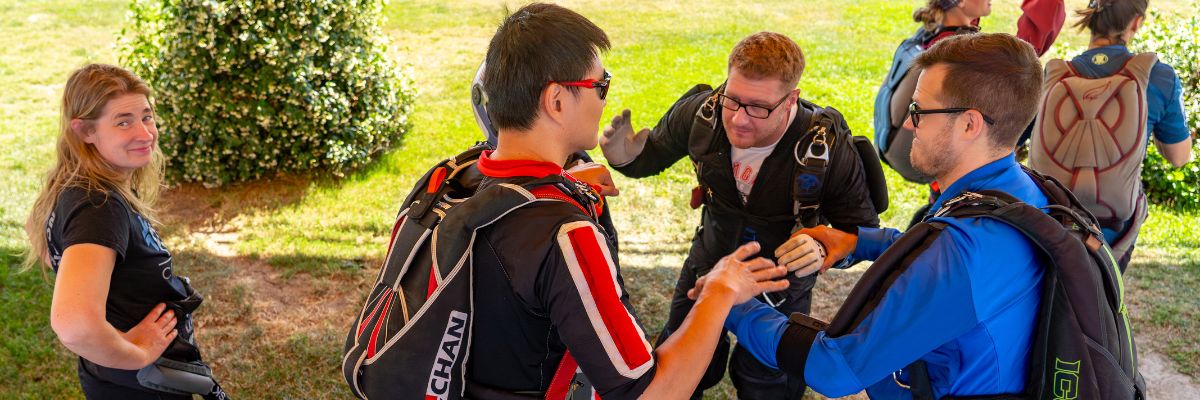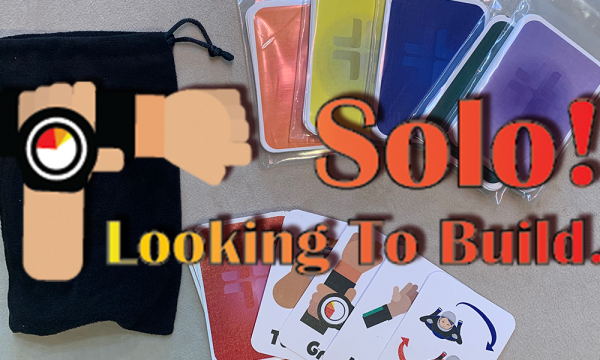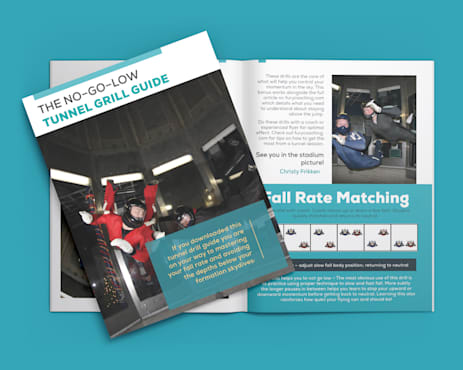In charge of making your team’s dives? Make dive plans like a ninja.
Monday, February 17, 2025

- Amanda Cole
- 2/17/25
- 0
- General, Mental Game
Anybody can hit a draw button, but is that the best way to set a training plan? Here is how to cleverly plan your jumps to learn the fastest and feel the most progress in your FS training.
Big Picture
Consider where you are in the season and how your training needs to shift as you approach competition. Ideally, you have a season plan, focusing on fundamentals at first, challenges mid-way, and competition near the end. This need will inform your goals and training style heavily.
Camp Goals
YOU MUST HAVE A GOAL. Define a specific, concrete set of goals for a camp, a day, and a jump. One or two goals are plenty. At any given point, you should be able to answer the question: “What exactly are you trying to improve on this jump?”
Once you know that, you can proceed to craft jumps that target those missions.
Logistics
The number of jumps you plan will depend on your camp goal, length of camp, and planned jumps per day. You should also consider the DZ operations.
Note that logistics might guide your camp training targets. For example, if it is a slow weekend, adjust goals for competition pace or dives that need technical breakdown and talking. On the other hand, if it is going to be 118 degrees by 2:00 pm, you might want to have a schedule that preps everything in the morning and goes for 12 straight to avoid the heat. Work with what you have!
Repeat?
Most teams repeat each jump, usually right afterward. I strongly disagree with this effectiveness, so I plan to do fewer repeats. Of course, this makes everything harder, but it improves results in the actual competition.
I reserve my repeats for very new teams who only get one or two attempts at a block per skydive or by choosing a select couple of jumps at the end of each day to repeat. How often you repeat a jump will affect the quantity.
Make the type match your goal
Consider short-term goals and make the type of jump to focus on what you are trying to improve. For example, three-block jumps might be a good fit if you are working on shutting down blocks. On the other hand, one-blockers are the way to go if you are working on random sprints.
Don’t overuse crafted dives
If you only generate dives from your head, the chances are you won’t get great coverage. When making dives to target a goal, I may choose simpler randoms to and from to avoid complicating the transition to the block. Only doing this would result in underexposure to important skills.
Some of my dives are crafted for this effect, but I generate the rest with an app. This keeps me from falling into a repetitive loop!
Exit coverage
Once you have your style of jumps, consider exit coverage. Even if you only have one exit, consider making the first point different types of blocks and randoms, so you get good at those particular transitions.
Breadth and width
A balanced plan touches on all blocks and styles of jumps throughout a camp but still has a focused theme.
To accomplish this, I split my jumps into competition mode and regular mode. In regular mode, I narrow down and focus on one concept or trouble spot. So, for example, if we are working on block 11, I might have many jumps with 11s. In competition mode, we would do a full draw to keep everything fresh.
Balance challenge
Don’t neglect what you are good at by hammering down what you are bad at. You get better at the good stuff, too, and it is confidence-inducing to include some of your strengths in skydives. One of my favorite techniques is to mix a confident block with a lower-confidence one to help boost it a little.
It’s a menu, not a manifest
You must have a plan, but you don’t have to stick to the plan. I skip and alter jumps all the time in response to what is happening with the team. The list of jumps is a starting place to mold to the best situation.
You can create a camp plan that helps you concentrate on your goals optimally. Spending time to think about your season, the logistics, and how to target your objectives jump to jump is more work but makes for a productive camp!
For more insights on season planning, exit strategies, and training goals, check out:
- The complete guide to setting up your team’s season
- How to Train Slot Switchers
- How to Train Just Before Nationals



